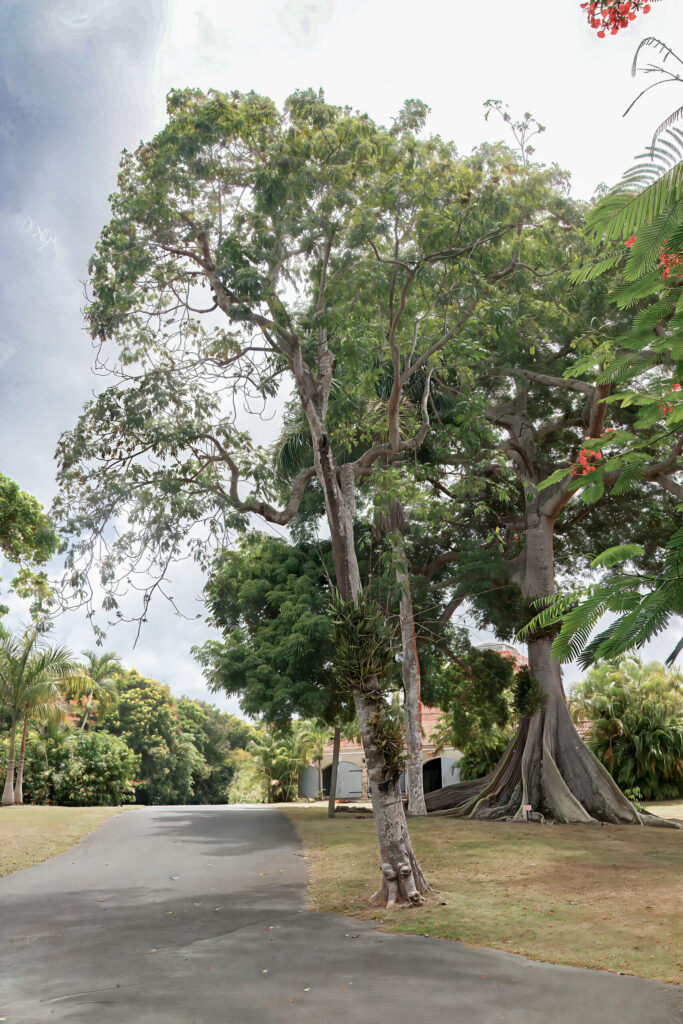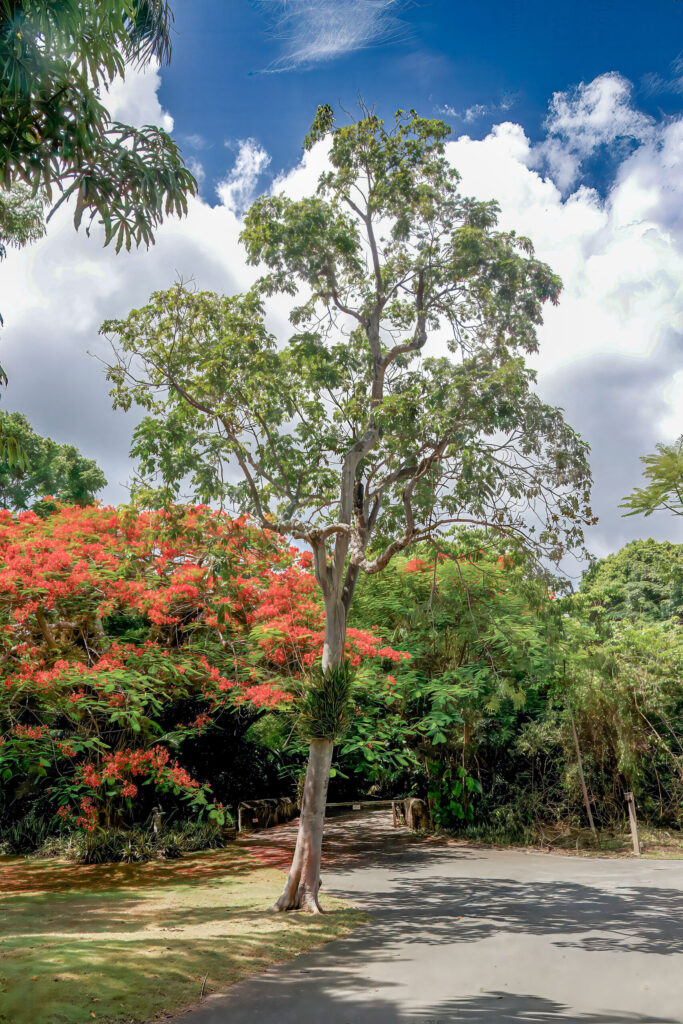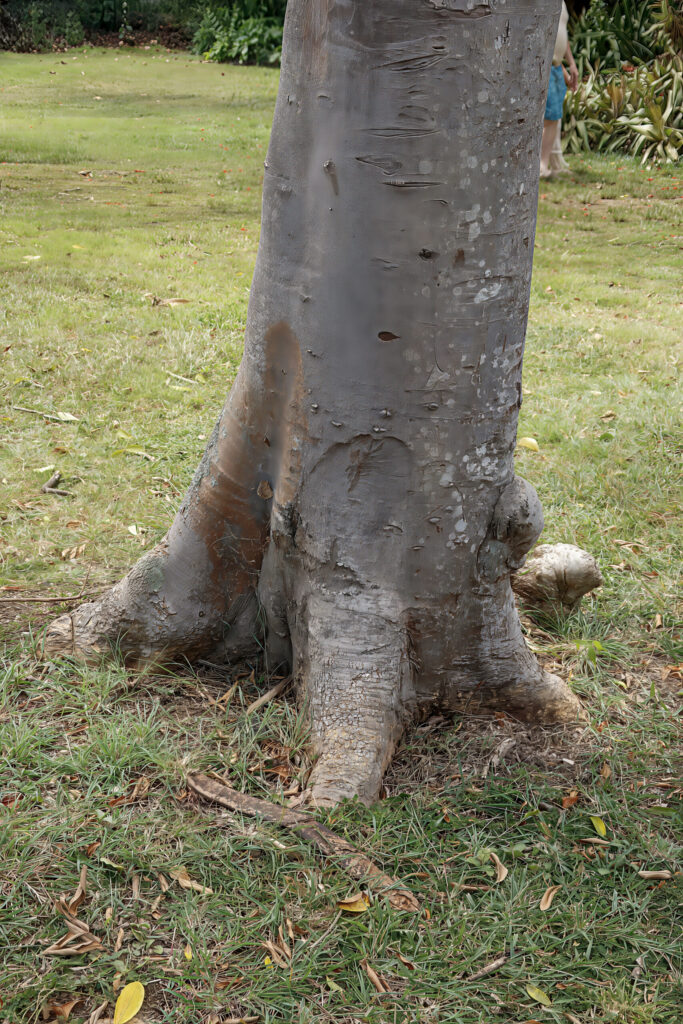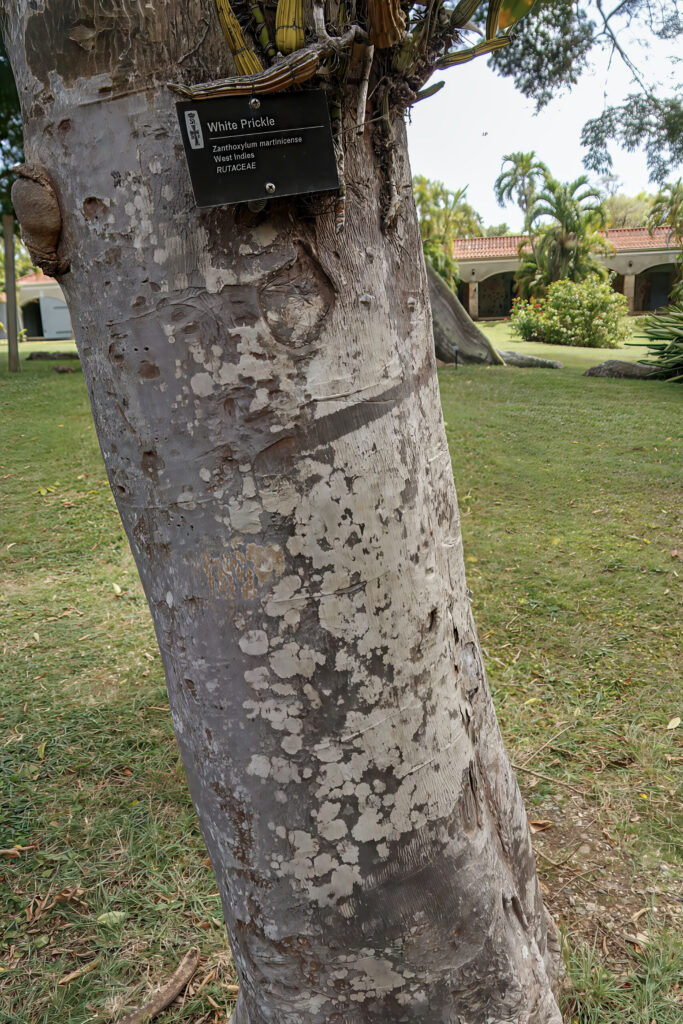White Prickle
Scientific name: Zanthoxylum martinicense
POWO Status: Tree
IUCN Red List threat level: Least Concern
GPS Location: 17° ″ N, 64° ″ W







Observations:
Phenological Markers: White Prickle (Zanthoxylum martinicense)
Scientific Name: Zanthoxylum martinicense (or Z. flavum / Z. monophyllum, depending on species)
Common Names: White Prickle, Prickly Ash, Yellow Sanders, Yellowwood
Family: Rutaceae (Citrus family)
Native Range: Caribbean, Central America, northern South America
Status in the Virgin Islands: Native; found in dry forests, coastal scrub, and rocky hillsides
🌳 Tree Characteristics
- Height: Typically 3–10 meters (10–33 feet)
- Trunk and Bark: Pale yellowish bark with corky spines or prickles on trunk and branches
- Leaves: Alternate, usually pinnately compound with 3–9 small, shiny, oval leaflets; citrus-scented when crushed
- Flowers: Small, greenish-yellow or whitish, borne in loose clusters; unisexual (separate male and female flowers)
- Fruit: Small, rounded capsules that split open to release black seeds; aromatic and resinous
📆 Phenological Markers
Spring (March–May)
- Leaf Flush: Fresh new leaves appear; reddish when young, turning shiny green
- Flowering Begins: Tiny greenish-white flowers emerge in loose inflorescences, often before full leaf-out
Summer (June–August)
- Peak Flowering: Small flowers attract bees and other insects; male and female flowers may appear on separate trees
- Fruit Set: Fruit capsules begin to form—small, green, and later turning reddish or brown
- Canopy: Moderate shade, often open and irregular; leaves remain relatively small and spaced
Fall (September–November)
- Fruit Maturation: Capsules dry and split open to reveal shiny black seeds; fruit is aromatic and slightly sticky
- Seed Dispersal: Seeds may fall near parent tree or be moved by birds or small mammals
Winter (December–February)
- Dry Season Adaptation: May shed some or most of its leaves during extended drought
- Dormancy: Reduced metabolic activity; bark and twigs remain greenish or yellow-brown with visible spines
👁️ Observation Tips
- Bark and Spines: Distinctive pale bark with blunt prickles—excellent ID marker year-round
- Leaf Aroma: Crush a leaflet to detect citrus or resinous scent
- Fruit Clusters: Small round capsules often persist into the dry season; splitting to reveal shiny black seeds
- Wildlife: Watch for pollinators during bloom and birds during fruiting
🌿 Ecological and Cultural Notes
- Ecological Role:
- Important nectar source for native bees
- Fruits attract birds
- Provides browse for wildlife during dry spells
- Traditional Uses:
- Bark and leaves used in folk remedies for toothache, digestion, and inflammation
- Known as a “toothache tree” in some cultures for its numbing properties
⚠️ Conservation Notes
- Resilience: Drought-tolerant and adapted to rocky, dry soils; fire-resistant bark
- Threats: Habitat loss due to development; occasionally cut for its aromatic wood
- Conservation Priority: Low risk but valuable in native plant restoration and ethnobotanical education
